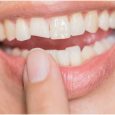The tough part is finally over and you can begin your journey to recovery.
To make the most out of your journey, you are equipped with a list of instructions on what to do for the next couple of days -how to take your medication, when to take your medication, how to take care of your teeth while it heals.

There’s just one thing that’s left, what to eat after a dental surgery
For a speedy recovery after getting dental implants, eating the right food is important. Listed below are some of the post-surgery food options available, along with the beverages and food that we recommend you avoid during the recovery stage.
Eggs
Consuming the right amount of protein can be difficult when you are on a diet featuring soft foods. To solve this problem, eat eggs.
Eggs become soft, no matter how they are cooked. In addition, scrambled eggs and omelettes are nutrient-packed meals that you can eat post-surgery, especially if you combine them with milk, vegetables, cheese, and so on.
Other sources of protein that you can eat on a soft diet include fish and beans, which can be combined with rice and vegetables for a full meal.
Natural smoothies and juices
Natural smoothies and juices are great because they are good sources of vitamins and nutrients as well as easy to drink. Following dental implant surgery, hot drinks and foods should be avoided. By drinking natural smoothies and juices, you would be speeding up the healing process
Soups
If your teeth feel too sour for soft food, soups can be good meals. Ensure that all the ingredients in your stew and soups are super soft or mashed. Tough pieces of meat or vegetables would be difficult to chew for your dental implants. Try to keep the consistency of the meal close to that of oatmeal.
Vegetables and fruits
You can almost never go wrong with vegetables and fruits after implant surgery. This is because most fruits are usually soft and those that aren’t can be placed in a blender or food processor or blender to make them easy to ingest.
Some of the best fruits to eat during the healing process include pears, berries, and ripe peaches. You can even try canned fruits or applesauce as alternatives.
Some vegetables might be hard; to make them easier to eat, we recommend softening them by steaming or boiling them. You could also mash up several vegetables together – for example, potato, pumpkin, cauliflower, and zucchini for a delicious veggie meal.
Potatoes
Potatoes are incredibly versatile; you can mash them, boil them, or fry them – you never get bored. As a bonus, cooked potatoes are soft and require little chewing.
Season your potatoes with cheese, butter, chives, sour cream, and so on. Just be careful not to get some of the pieces lodged in between your teeth, especially in your implant while it heals.
Foods to avoid
The general rule is to avoid eating hard foods during the healing process. This is because, after your wisdom teeth removal or replacement, your teeth will be sensitive for at least one or two weeks following the surgery. Your implant will be fusing to your jawbone at this time. In addition, hard foods could interrupt the jaw implant integration process or dislodge the implant before it properly fuses.
To help increase the likelihood of implant success and speed of your recovery, it is best to avoid the following drinks and foods:
- Alcoholic beverage
- Spicy foods
- Cold or hot food and beverages
- Dried fruits and gum
- Crunchy food – crackers, seeds, cookies, and chips.
- Sugary beverages like soda.
We also recommend that you avoid drinking any beverages through a straw as this can cause blood clots around the wound to loosen, which would reopen the wound and slow the healing process down. Drink straight from the cup or use a spoon to drink your beverages.
In conclusion
Please remember, every surgery is different. For optimal care, follow your dentist’s post-surgery instructions to the latter.
After some surgeries, you may be required to be on a liquid diet for a specific period of time before you can move on to soft foods. If that is the case, you can liquify any of the foods listed above using a blender. You can also make many healthy, favorable smoothies or drinks using raw vegetables that are packed with vitamins and nutrients that would help with the healing process.




